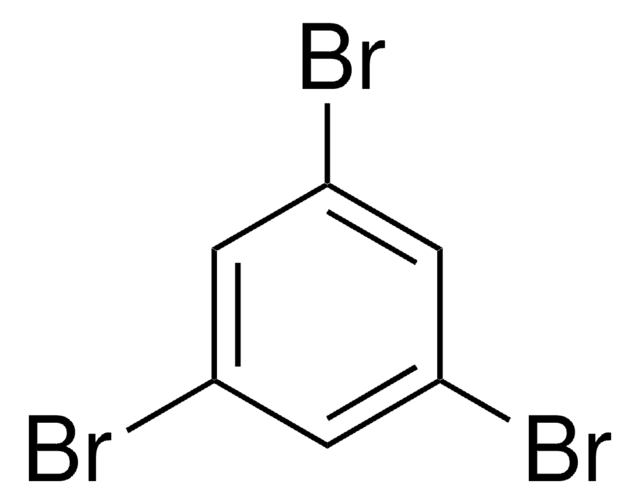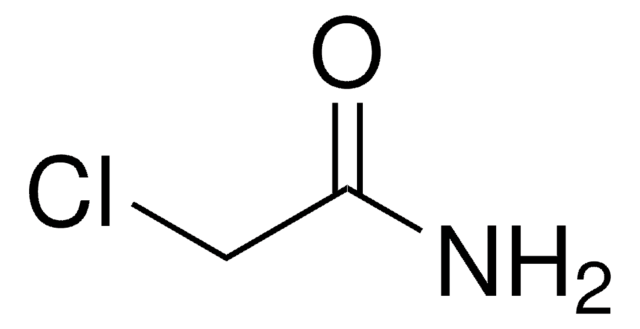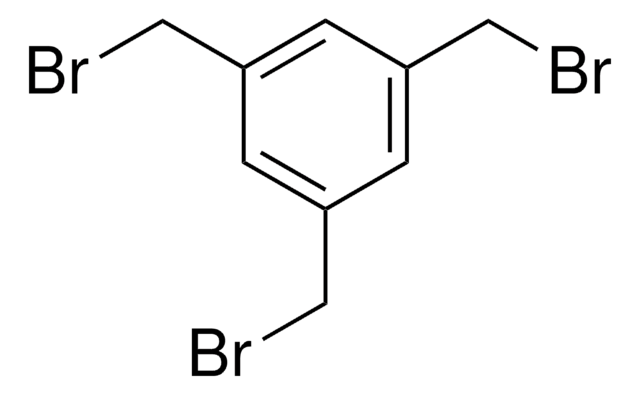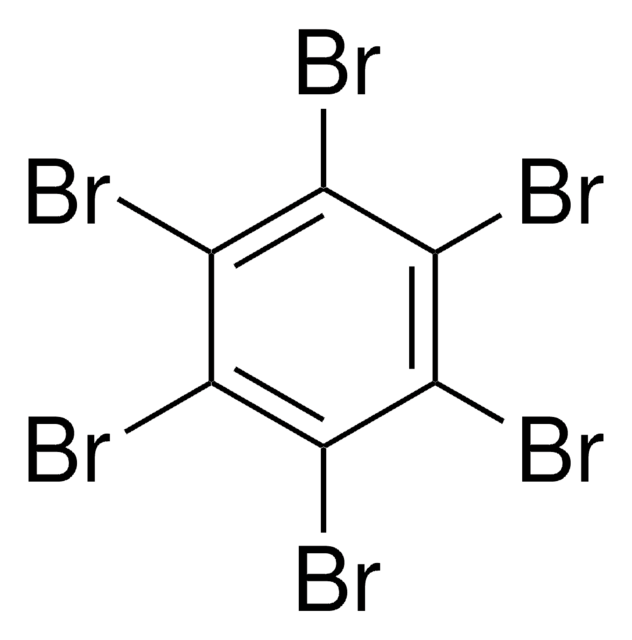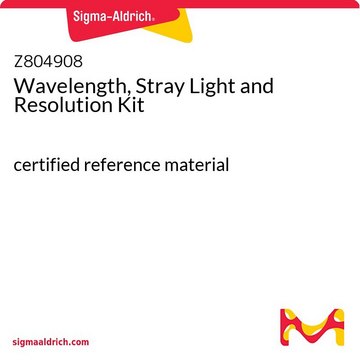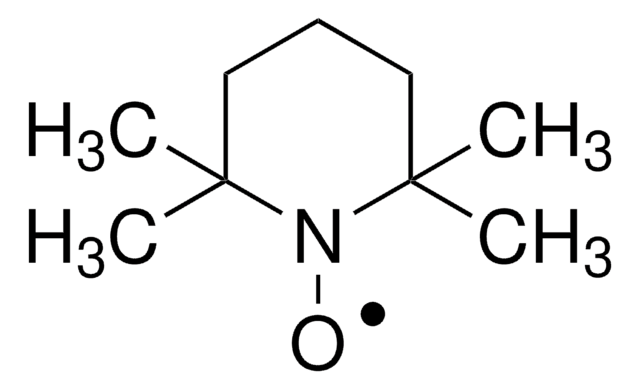132756
1,2,4-Tribromobenzene
95%
Iniciar sesiónpara Ver la Fijación de precios por contrato y de la organización
About This Item
Fórmula empírica (notación de Hill):
C6H3Br3
Número de CAS:
Peso molecular:
314.80
Número CE:
Número MDL:
Código UNSPSC:
12352100
ID de la sustancia en PubChem:
NACRES:
NA.22
Productos recomendados
Nivel de calidad
Análisis
95%
formulario
solid
mp
41-43 °C (lit.)
grupo funcional
bromo
cadena SMILES
Brc1ccc(Br)c(Br)c1
InChI
1S/C6H3Br3/c7-4-1-2-5(8)6(9)3-4/h1-3H
Clave InChI
FWAJPSIPOULHHH-UHFFFAOYSA-N
Categorías relacionadas
Descripción general
1,2,4-tribromobenzene on photochemical dehalogenation in open-air solutions of acetonitrile yields 1,4-dibromobenzene, 1,3-dibromobenzene and 1,2-dibromobenzene.
Aplicación
1,2,4-tribromobenzene was used in the synthesis of hyperbranched poly(p-phenylene ethynylenes). It was used as cross-linking reagent during Pd-catalyzed cross-coupling of 2,5-diiodo-4-[(2-ethylhexyl)oxy]methoxybenzene and 1,4-diethynyl-2,5-bis-(octyloxy)benzene.
Palabra de señalización
Warning
Frases de peligro
Consejos de prudencia
Clasificaciones de peligro
Aquatic Acute 1 - Aquatic Chronic 1 - Eye Irrit. 2 - Skin Irrit. 2 - STOT SE 3
Órganos de actuación
Respiratory system
Código de clase de almacenamiento
11 - Combustible Solids
Clase de riesgo para el agua (WGK)
WGK 3
Punto de inflamabilidad (°F)
235.4 °F - closed cup
Punto de inflamabilidad (°C)
113 °C - closed cup
Equipo de protección personal
dust mask type N95 (US), Eyeshields, Gloves
Elija entre una de las versiones más recientes:
¿Ya tiene este producto?
Encuentre la documentación para los productos que ha comprado recientemente en la Biblioteca de documentos.
P K Freeman et al.
Journal of chemical technology and biotechnology (Oxford, Oxfordshire : 1986), 72(1), 45-49 (1998-06-17)
The photochemical dehalogenation of 1,2,4-tribromobenzene, 1,2,3,5-tetrabromobenzene and pentachlorobenzene in open-air solutions of acetonitrile using natural and artificial sunlight as the irradiation source has been investigated. The regiochemistry of mono-dehalogenation has been determined for 1,2,4-tribromobenzene and 1,2,3,5-tetrabromobenzene. Pentachlorobenzene did not react.
Synthesis and characterization of cross-linked conjugated polymer milli-, micro-, and nanoparticles.
Eric Hittinger et al.
Angewandte Chemie (International ed. in English), 43(14), 1808-1811 (2004-04-01)
Hyperbranched Poly (p-phenylene ethynylene) s.
Mendez JD, et al.
Macromolecular Chemistry and Physics, 208(15), 1625-1636 (2007)
E N Smith et al.
Journal of toxicology and environmental health, 6(4), 737-749 (1980-07-01)
1,2,4-Trichlorobenzene (TCB) and 1,2,4-tribromobenzene (TBB) were administered for 7 d to rats at a dose of 1 mmol/kg.d. The animals were sacrificed at various times to observe the decline in enzyme induction. Carbon 14-labeled TCB and TBB were administered and
Darol E Dodd et al.
International journal of toxicology, 31(3), 250-256 (2012-04-06)
Male Sprague-Dawley rats were exposed to 1,2,4-tribromobenzene (TBB) by gavage for 5 days, 2, 4, and 13 weeks at 0, 2.5, 5, 10, 25, or 75 mg/kg per d. There were no TBB exposure-related clinical signs of toxicity or changes
Nuestro equipo de científicos tiene experiencia en todas las áreas de investigación: Ciencias de la vida, Ciencia de los materiales, Síntesis química, Cromatografía, Analítica y muchas otras.
Póngase en contacto con el Servicio técnico